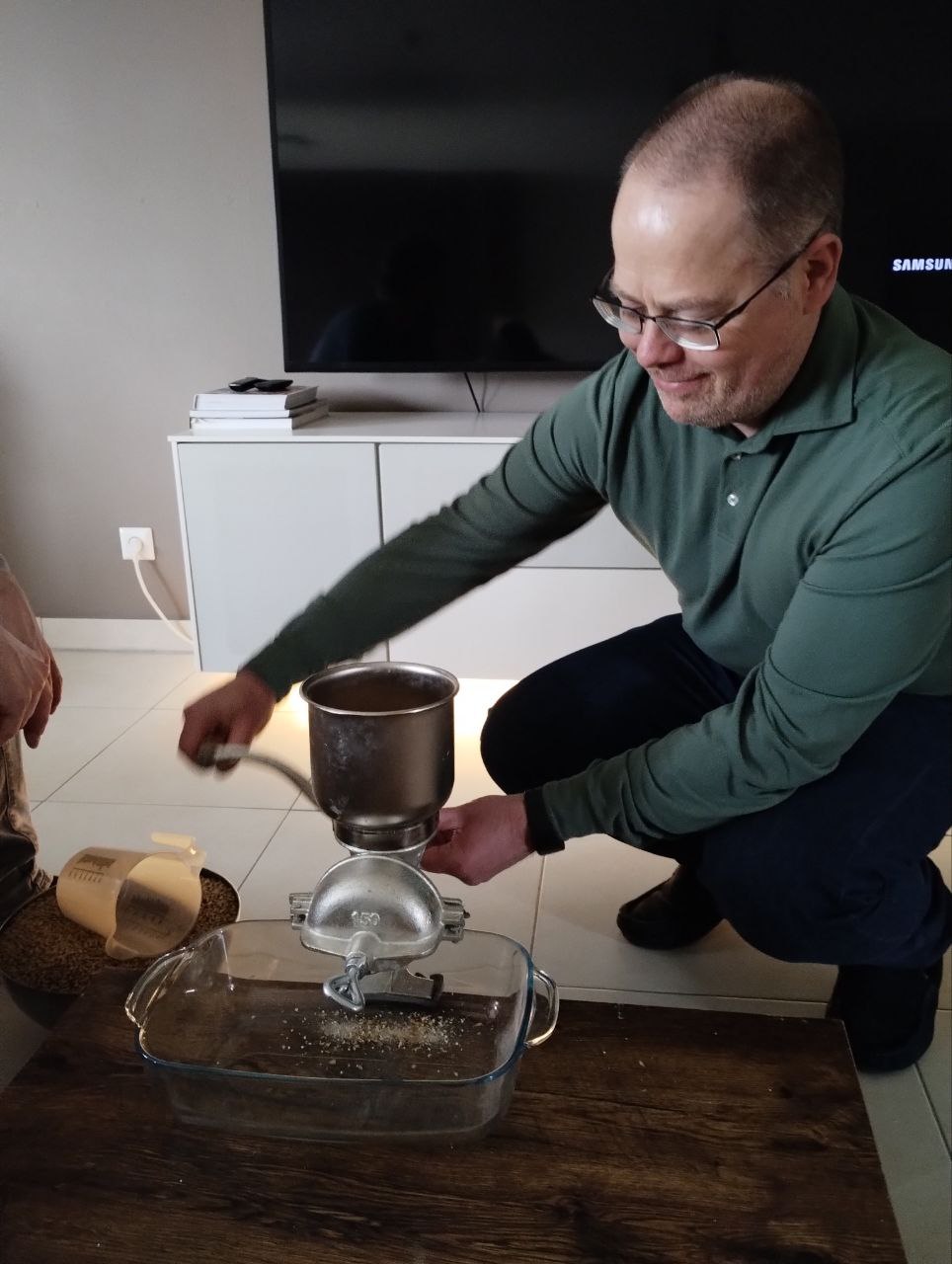Brew Day
- Pale Ale Malt - 3.330 kg
- Pilsner Malt - 3.330 kg
- Munich Malt - Dark - 0.700 kg
- Caramel 100 - 38L - 0.150 kg
Each bring different different characteristics to the beer.

Brew Day +1 - Fermentation
After 24 hours at 22c
Brew Day +5 - Cold Crash
Fermentation is complete, the warm uncarbonated beer is giving off boozy banana and spicy notes.
Taste wise it has a first hit of sweetness with a medium body. Some banana, booze spice, followed by a slightly sour finish.
Time now to cool the beer to 2c which will stop any remaining yeast activity and cause the sediment to sink to the bottom.
As the cooling happens it is possible for the pressure differential between the fermentation bucket and the fridge to lead to air from the fridge being sucked through the air lock, this could lead to oxidization which could affect the taste of the beer, placing a balloon filled with CO2 over the air lock can protect against that.
Brew Day +7 - Kegging
Sanitization! Sanitization! Sanitization!
Sanitize everything, every connection, the keg, the tap on the fermentation bucket, the pipes and use CO2 to purge the keg.
Create a closed loop between the keg and the fermentation bucket.
The pressure in the keg and gravity will push the beer into the keg. It is important to have the right pressure in the keg, too much and the fermentation bucket could explode, too little and it will take a long time for the beer to flow into the keg, so not PPPPSSSSSTTTTT and not pppssssstttt but PPPPPSSSTTTT!
Carbonation
Approaches to forced carbonation of beer can be categorized as;
- Set & Forget Method
- Semi-Speed Carbonation Method
- Rapid Force Carbonation Method
